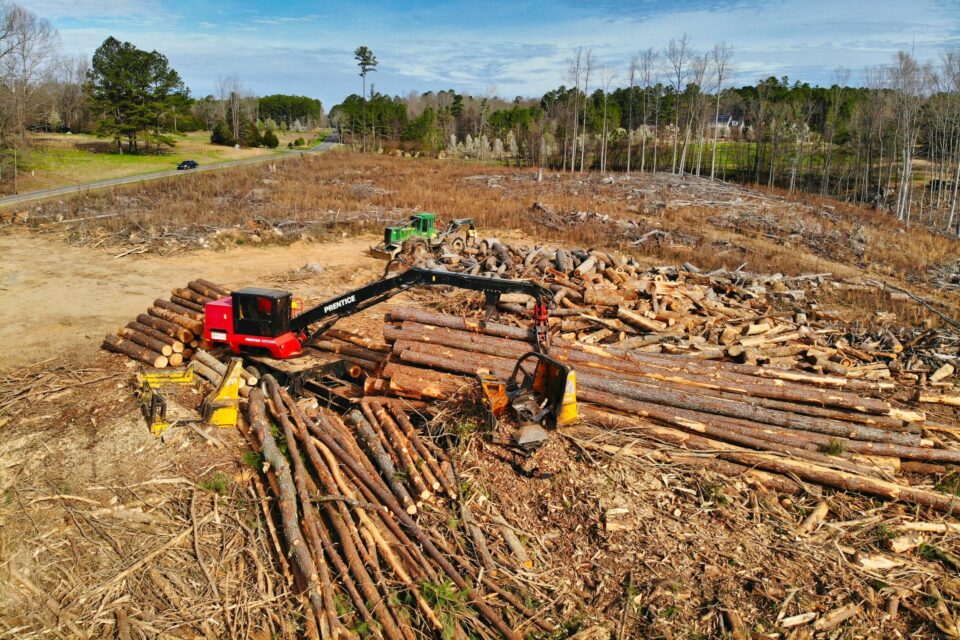Land clearing is an important part of urban development, agricultural, and conservation initiatives. In Oklahoma City, the practice is a vital component in preparing land for construction, farming, and other land uses. This article provides an informative overview of land clearing in Oklahoma City, discussing its importance, methods, and environmental impact.
The Importance of Land Clearing
Land clearing is the removal of trees, shrubs, rocks, and other barriers from a plot of land. This is often the first step in preparing land for construction, whether for residential, commercial, or infrastructure projects. Without proper land clearing, it would be difficult to lay foundations, install utilities, or create roads. Additionally, land clearing is essential in agricultural settings to prepare fields for planting crops or grazing livestock.
In Oklahoma City, land clearing is essential due to the city’s rapid growth and development. As more people move into the area, there is a need for new housing developments, commercial spaces, and public infrastructure. Proper land clearing ensures that these projects can be completed efficiently and safely.
Common Land Clearing Methods
Several methods are commonly used in land clearing, each with advantages and applications. The choice of method often depends on the size of the land, the type of vegetation, and the intended use of the cleared land. Here are some of the most common methods used in Oklahoma City:
- Manual Clearing: This method involves using hand tools such as axes, chainsaws, and machetes to remove trees and shrubs. Manual clearing is often used for small areas or when precision is required, such as when clearing land around existing structures. While this method is labor-intensive, it allows for greater control over what is removed and what is left intact.
- Mechanical Clearing: Mechanical clearing involves the use of heavy machinery such as bulldozers, excavators, and brush cutters to clear large areas of land quickly. This method is ideal for clearing large plots of land for construction or agricultural purposes. Mechanical clearing is highly efficient but can be more disruptive to the environment compared to manual clearing.
- Controlled Burning: In some cases, controlled burning is used as a method of land clearing. This involves setting fire to the vegetation to clear the land of trees, shrubs, and underbrush. Controlled burning can be an effective way to manage large areas of land, but it requires careful planning and adherence to local regulations to prevent wildfires and air pollution.
- Chemical Clearing: Chemical clearing involves the use of herbicides to kill vegetation, which is then removed or left to decompose naturally. This method is often used in conjunction with other clearing methods to prevent regrowth. While effective, chemical clearing can have environmental consequences, particularly if chemicals are not used responsibly.
Environmental Considerations
Land clearing, while necessary for development, can have significant environmental impacts. In Oklahoma City, as in other regions, it is important to consider the potential effects on local ecosystems, wildlife habitats, and soil health.
One of the primary concerns with land clearing is the loss of vegetation, which can lead to soil erosion and degradation. Without trees and other plants to anchor the soil, rainwater can wash away the topsoil, leading to reduced soil fertility and increased sedimentation in nearby water bodies.
Another environmental consideration is the impact on wildlife. Land clearing can destroy habitats, displace animals, and disrupt migration patterns. In Oklahoma City, where wildlife is an integral part of the local ecosystem, it is important to conduct land clearing in a way that minimizes harm to animals and preserves as much natural habitat as possible.
To mitigate these environmental impacts, it is essential to follow best practices in land clearing. This includes leaving buffer zones of vegetation near water bodies, using erosion control measures, and replanting cleared areas with native species. Additionally, when possible, land clearing should be done in phases to allow wildlife time to adapt to the changes in their environment.
Regulations and Permits
In Oklahoma City, land clearing is subject to various regulations and permitting requirements. These regulations are in place to ensure that land clearing is done responsibly and with consideration for the environment and public safety. Before beginning a land clearing project, it is important to check with local authorities to determine what permits are required and what regulations must be followed.
Regulations may include restrictions on the use of certain clearing methods, requirements for erosion control, and guidelines for protecting wildlife habitats. Failure to comply with these regulations can result in fines, project delays, and other legal consequences.
Conclusion
Land clearing in Oklahoma City is a crucial process in the development and maintenance of land. While it offers many benefits, including preparing land for construction and agriculture, it also comes with environmental responsibilities. By understanding the various methods of land clearing and adhering to local regulations, landowners and developers can ensure that their projects are completed efficiently and sustainably.

